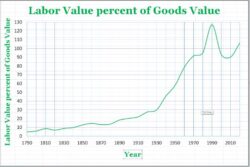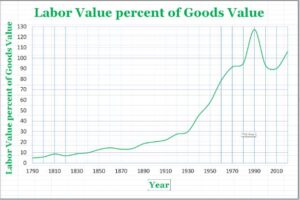Did we Boomers have it better?

CONTRIBUTED TO SBINSIDER BY DOUG CARDELL Ph.D.
DougCardell.com
I’ve read a lot of comments lately by young people about the rising cost of housing, food costs, and stagnant wage rates. They talk about how much better the ‘boomers’ had it. While it’s true that inflation-adjusted housing costs have risen since 1950, that’s only part of the story. It is a severe error in economic thinking to compare price changes without comparing changes in the product. In inflation-adjusted dollars, an average home today costs more than in 1950, but homes have changed dramatically in that time. In 1950, the average home was 983 square feet, while today, they are about 2500 square feet, two and a half times larger. In addition, in 1950, modern central heating was just being introduced, and most homes didn’t have it, and central air conditioning was still twenty years away. There are few houses today as small as those in 1950, but mobile homes of that size include central heating and air conditioning that are better built than typical 1950 homes for the same price in inflation-adjusted dollars as a home would have cost in 1950. Housing costs per square foot are about the same as seventy years ago. Also, homes now include central heating and air conditioning, dishwashers, washing machines, dryers, stoves, and refrigerators at that time. In 1950, almost none did.
Another factor is the decreasing size of families. This factor is essential because it is incorrect to compare home sizes without comparing the number of occupants. In 1790, the typical family size averaged 5.8 persons, only 144 square feet per person. However, by 1950, home sizes had only marginally increased to 983 square feet, but family size had decreased to an average of 3.4 people, almost doubling to 264 square feet per person. Today, a typical home has 2500 square feet, occupied by only 2.4 residents, over 1000 square feet per person, bigger than an entire house in 1950. As a result, folks today have over seven times the personal space as in 1790 and over three and a half times that in 1950.
Many young people also believe that inflation-adjusted wages have decreased since 1950. It’s not as simple as that. Inflation adjustment cannot be applied to all things equally. The relative value of what the dollar buys changes over time. Since 1790, improved production and distribution have dramatically increased the value of goods. During that same period, advances in tools and technology have also increased the value of labor.
However, the value of work has grown far more than the value of goods. As a result, an hour’s labor will buy more than twenty times the goods it could purchase in 1790. Goods were valued greater than labor because goods were scarce and labor was plentiful. By 1900, that ratio had shrunk the value of goods to five times that of labor. By 1950, the labor-to-goods ratio had increased to almost 60%, meaning that goods were slightly less than twice as valuable as labor. Today, the difference has disappeared; we now value goods and labor nearly equally, with labor holding a slight edge. Below is a graph showing the labor value as a percent of goods value over time. The result of this change in value means that labor today buys almost double the goods it could buy in 1950.

Young people today have far more advantages than their boomer antecedents. Wages buy far more today than in 1950. They buy more spacious homes with far more features; they buy computers that cost far less and do far more. They buy appliances that dramatically outperform their sixty or seventy-year-old counterparts. Wages today also buy a wealth of things that didn’t even exist fifty years ago: cell phones, flat-screen TVs as much as twenty times the size of those CRT TVs of fifty years ago, robotic lawnmowers and floor cleaners, and many more.
The result is that people in the US today live better than ever and work less to pay for it. In 1830, the typical work week was 70 hours; by 1890, it had shrunk to 60. In 1930, it was 50; it wasn’t until 1980 that it reached 40, and today, it’s 38.7 hrs/week, a bit more than half of what it was in 1830. Life has challenges, always has, and always will, but today’s world is vastly
superior to life in the past.
Everyone should take time to appreciate and enjoy it.








